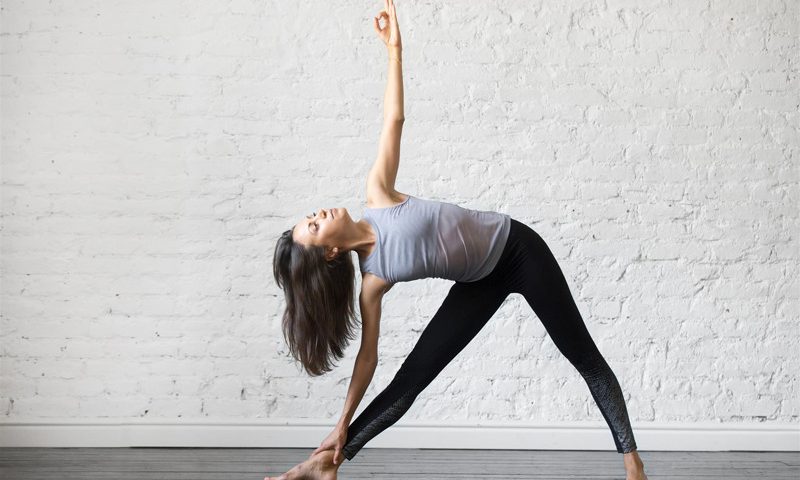
Calming Yoga Sequences
August 30, 2018
Why Men Should Do Yoga
September 13, 2018Why is it Important to Listen to Your Body?

Learning how to listen to your body takes time and patience. While some people assume it’s a talent we’re born with, that’s often not the case. If you’re training for a marathon, the ‘mind over matter’ approach can help you to break through your mental barriers and reach the finish line; however, pushing your body past its limit has the potential to cause serious damage. Unlike competitive sports, yoga isn’t a race. Instead, it’s a highly personal practice that should be developed at your own pace. When you get onto the yoga mat, listening to your body can help you progress both mentally and physically. In this article, we explore exactly why it is important to listen to your body.
To Avoid Injury
Listening to your body can help you to avoid unnecessary injury. If you start to push your muscles too far, they will tell you that you have reached your limit. Learning to listen to your body and back off when things start to feel tight will ensure you don’t cause any long-term injuries.
To start with, distinguishing between pain and discomfort can be tricky. However, with time it will become second nature. Although pain can be sharp or dull, it’s typically a little more than ‘uncomfortable’. During yoga, discomfort is often described as tightness with possibility. Although a certain level of tightness is to be expected, it’s important to keep an eye on how long it lasts for. Often, discomfort will shift with light stretching and focussed breathing; however, if it doesn’t then it can begin to turn into pain. If we overexert our muscles, it’s not unusual for pain to set in. However, if you’re experiencing pain after little to no movement, it may be a sign of a health concern. To ensure there is nothing sinister going on, make an appointment with your local GP and get checked out.
To Understand Your Personal Limit
During a yoga class, the instructor will advise you on how long to hold each posture for. However, it’s important to remember that everybody is different, and just because one yogi can hold the pose for a full 2 minutes, that doesn’t mean you should. Thankfully, your body will let you know when it’s had enough and encourage you to back off. If a certain posture doesn’t feel right, consider taking a break before moving onto the next pose. Your instructor will understand that everybody is different, and will have nothing but respect for you for listening to your body.
It’s important to note that you should look out for more than just physical pain. When listening to your body, you should be aware of any sensations that feel uncomfortable. Dizziness and fatigue can also be signs that you’re pushing yourself too far. As these sensations can indicate dehydration, the best thing to do it take a break and sip on some fresh water. If you begin to feel better, gradually ease yourself back into the class.
To Progress Faster
Some people believe that the further they push themselves, the faster they will progress. While this is true with some forms of exercise, this isn’t the case when it comes to yoga. If you want to progress smoothly, the best thing to do is listen to your body. Sensing when you’ve reached your limit will keep your body happy and healthy and reward you with fast, smooth, and consistent progress.
If you push yourself too fast, too soon, you’re likely to cause unnecessary injury. If this happens, you’ll need to take time out to recover which will hinder your progression. Worse still, you may cause long-term damage that prevents you from reaching your goal.

How to Listen to Your Body
Below we discuss some of the best tips and tricks for listening to your body.
Make Notes
When learning to listen to your body, it’s important to make notes of anything that feels difficult, painful, or joyful. Understanding the difference between sensations will allow you to notice when something feels off. It’s worth pointing out that the note-taking doesn’t have to be physical. If you’d prefer to make mental notes, that’s fine too!
Pay Attention
Although this may seem obvious, you’d be surprised at how many yogis miss this! During your practice, pay attention to what your body feels like. For instance, do you feel tense, fluid, or numb? These feelings are your body’s way of communicating with you.
Listen to Gut Reactions
During your practice, you may experience a ‘gut reaction’ such as a headache, stomach ache, or overwhelming emotion. If you do, pay attention to it! In addition to physical sensations, you should listen to your body’s emotional reactions, too.
Be Kind to Yourself
When you practice, notice how you talk to yourself. Do you appreciate your body or are you negative towards it? To learn how to listen, it’s important to form a positive connection between your inner thoughts and physical body.
Make Healthy Choices
As well as being kind to yourself emotionally, you must be kind physically, too. Understand that you put your body at risk when you make unhealthy choices when it comes to food, exercise, and even relationships. If you’re already in bad shape, it can be harder to notice when things start to feel off.
In Summary
Whether you’re an avid practitioner or you’re just starting out, listening to your body can improve your yoga practice. As well as preventing unnecessary injury, the tips above can help you to progress faster and smoother than you would otherwise. To notice your body’s signals, it’s important to be comfortable. A sleeveless yoga t-shirt and a flexible pair of yoga pants will ensure you’re not distracted by restrictive clothing.

